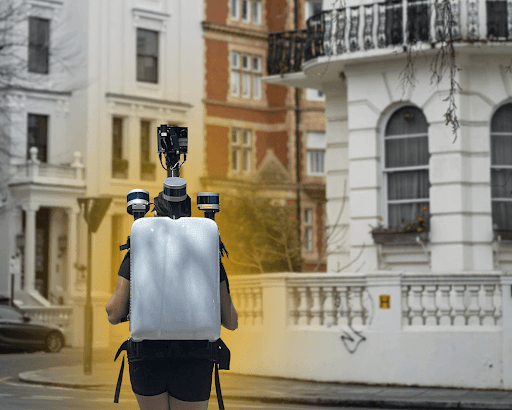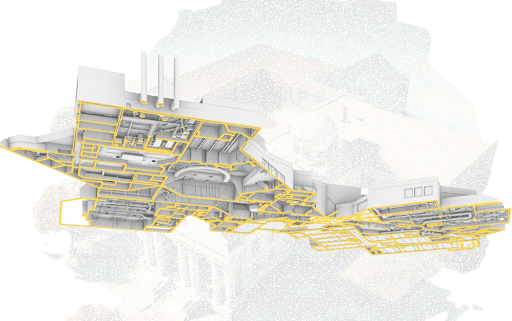
In an ideal situation, a building designer would have access to smart 3D models with clearly defined design elements. A change made to one component would automatically reflect on the other elements connected to it. The presence of an accurate and smart 3D model can be crucial for all stages of construction.
A building information model (BIM) is a method that allows designers to create a similar digital 3D model that AEC professionals can later use. Based on an intelligent model and cloud infrastructure, BIM incorporates reality data to create a digital representation of a building across its lifecycle. There is an increasing demand in the AEC industry for applying BIM to existing buildings. Scan-to-BIM services enable the creation of digital models of pre-existing structures and sites that can be used to develop and maintain a living replica of the built world.
A laser scan-to-BIM model is a 3D model created from light detection and ranging sensor, also known as LiDAR. The reality scan’s purpose is to capture an object’s elements in physical space. “Scan-to-BIM” captures high-resolution 3D simulations of existing buildings and converts them into workable models as if you were there. In effect, these sensors or LiDAR technology automates the challenging task of documenting the sites in their current form.

The LiDAR scanner emits laser beams that strike and bounce back to the instrument, measuring the distances between all the surfaces and the instrument as it travels back and forth. LiDAR also captures different points during the scanning process and colorizes them based on 3D imaging. These points are collectively termed a point cloud.
AEC professionals have widely adopted scan-to-BIM because of its benefits to automating field data collection to the highest degree of accuracy. Here are a few reasons why it has become popular:
Scan-to-BIM replaces the need for several drawings, routine site visits, and so on, creating a comprehensive 3D model on a digital platform.
The as-built model of the site and nearby buildings helps professionals comprehend site conditions and make informed design decisions.
LiDAR (laser) scans help identify potential problems for installation and assemblies, resulting in time and cost savings.
A 3D digital building model created through scan-to-BIM can increase accuracy and productivity. Collaborating with a platform such as Robotic imaging is a smart way to reap the benefits of BIM (Building/Reality Information Modeling) without the headaches of travel, training, equipment costs, and computing.
The future of the construction industry is still unknown. One thing is for sure… the robots are coming.

Media Contact
Company Name: Robotic Imaging
Contact Person: Mike Chawaga
Email: Send Email
Phone: 4843545376
Country: United States
Website: https://www.roboticimaging.com/
